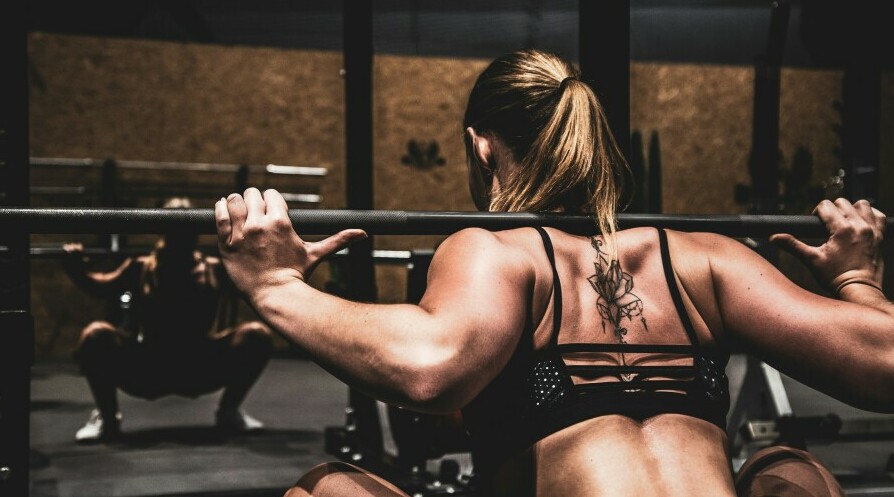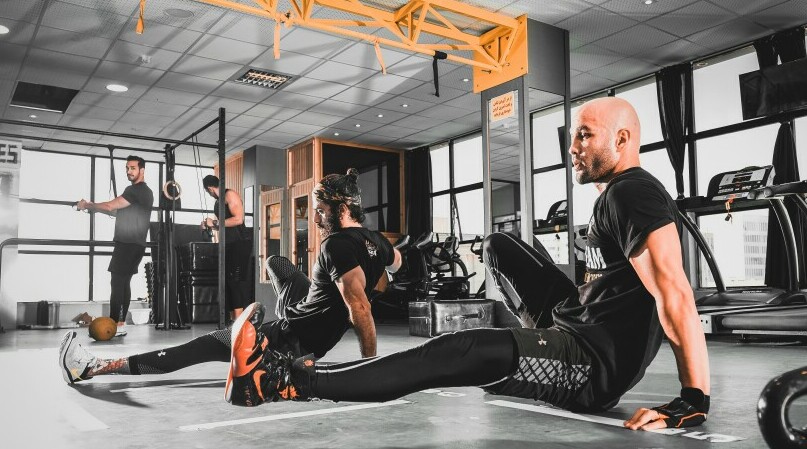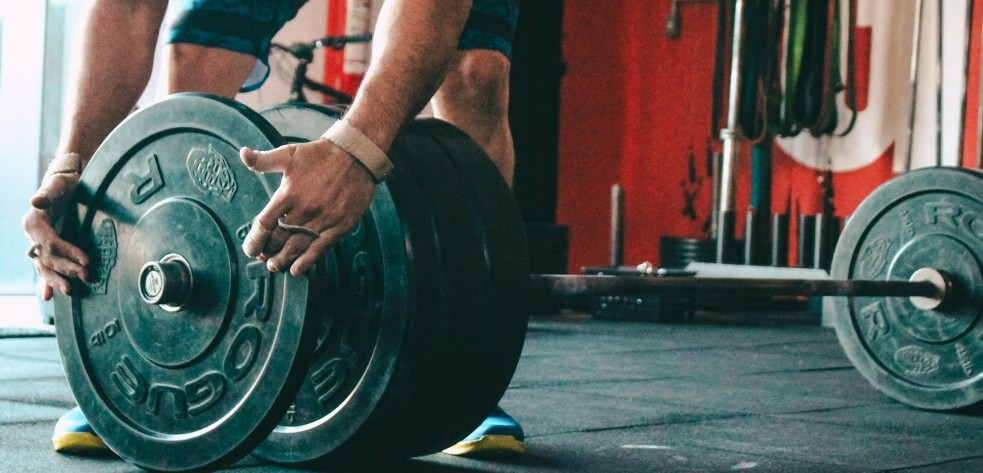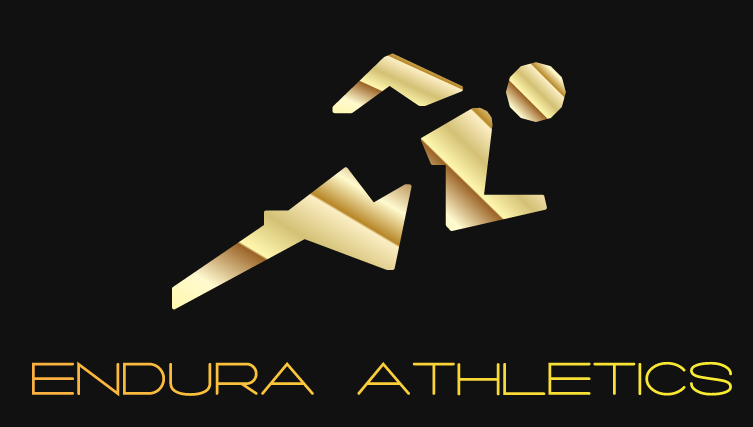Strength training to up your fitness game. Before you add a single weight to a barbell, I stress the necessity of starting with a clear, strategic approach. Strength training is not simply about lifting weights. It’s about building a foundation for athletic success. This begins with assessment and goal setting – two critical steps that set the stage for every gain to come.
Consider the assessment mirror that reflects an athlete’s current capabilities. It reveals both strengths that can be leveraged and weaknesses that need attention. It might consist of a series of exercises to evaluate core strength, flexibility, or even cardiovascular fitness. An effective assessment zeros in on these aspects to inform a tailored workout program.
 Speaking of goals, I advocate for the SMART framework – Specific, Measurable, Achievable, Relevant, and Time-bound training program. When an athlete’s aim is to increase squat weight, setting a specific and measurable goal such as adding 30 or 50 pounds to their squat in three months provided it’s aligned with their athletic ability and is indeed attainable it will keep you focused and motivated.
Speaking of goals, I advocate for the SMART framework – Specific, Measurable, Achievable, Relevant, and Time-bound training program. When an athlete’s aim is to increase squat weight, setting a specific and measurable goal such as adding 30 or 50 pounds to their squat in three months provided it’s aligned with their athletic ability and is indeed attainable it will keep you focused and motivated.
A comprehensive pre-training assessment doesn’t just form the workout plan it is fundamental for tracking progress. It serves as a benchmark allowing athletes and coaches to periodically revisit these initial evaluations, giving evidence of improvement and also will show areas that require further effort.
After goals are set and assessments are complete, attention must turn to preparation. It’s critical not to rush into the main workout without priming the body first, which leads us to the importance of warm-ups. The next step to ensure athletes are ready to train effectively and safely.

Activating Success: The Significance of Warm-Ups
Imagine diving into a rigorous training session without first prepping your body. Seems counterproductive, right? This is why warm-ups are a staple in any athlete’s toolkit. A warm-up kick-starts your body, signaling to your muscles, ‘It’s showtime!’ Its like crafting a finely tuned engine for peak performance. It is a multi-layered process scientifically designed to boost performance and safeguard against injuries.
What does a truly effective warm-up look like? It’s not a one-size-fits-all scenario, but dynamic stretching often takes center stage. By employing movements similar to those in your workout or sport, dynamic stretching increases blood flow and wakes up the nervous system, fine-tuning coordination and agility when you need it most.
Incorporating sport-specific movements into your warm-up doesn’t just prepare your muscles and joints it also awakens your mind for the game. A runner may practice strides, a swimmer – arm circles. Tailoring this component of your warm-up can mean the difference between a good performance and a great one.
Strategize your warm-ups to be short but impactful. Time is precious, and you want every minute of your warm-up to count towards better performance. With a well-orchestrated warm-up, you’ll step into your training session fully activated and less prone to injury, paving the way for mastering the core movements and accessory exercises that come next. Certainly a dynamic warm-up routine is essential to prepare the body for the demands of strength training and athletic performance. Here’s a selection of dynamic warm-up exercises you can incorporate:
- Arm Circles: Stand tall with arms extended to the sides. Make small circles with your arms, gradually increasing the size of the circles. Reverse the direction after a few repetitions.
- Leg Swings: Hold onto a stable surface for balance. Swing one leg forward and backward, gradually increasing the range of motion. Repeat with the other leg.
- Hip Circles: Stand with feet hip-width apart. Place hands on hips and rotate hips in a circular motion, first clockwise, then counter clockwise.
- High Knees: Stand tall and march in place, bringing knees up towards your chest with each step. Focus on maintaining an upright posture and swinging the arms in sync with the movement.
- Butt Kicks: Jog in place while kicking your heels up towards your glutes. Keep your core engaged and arms relaxed as you move.
- Lateral Lunges: Take a wide step to the side, keeping toes pointed forward and hips squared. Bend the knee of the lunging leg while keeping the opposite leg straight. Return to the starting position and repeat on the other side.
- Inchworms: Start in a standing position, then bend forward at the waist and walk your hands out to a high plank position. Hold briefly, then walk your hands back towards your feet and return to standing.
- Jumping Jacks: Begin with feet together and arms at your sides. Jump while simultaneously spreading your legs to shoulder-width apart and raising your arms overhead. Jump back to the starting position and repeat.
- Dynamic Leg Kicks: Stand with feet hip-width apart. Kick one leg straight out in front of you, then swing it back behind you, keeping it straight. Repeat with the other leg.
- Torso Twists: Stand with feet hip-width apart and arms extended to the sides. Rotate your torso to one side, keeping your hips facing forward. Return to the center and repeat on the other side.
Perform each exercise for about 20-30 seconds or 10-15 repetitions, gradually increasing intensity as you progress through the warm-up. This routine will help increase blood flow, improve mobility and mentally prepare you for your strength training session or athletic performance.

The Core of the Matter: Core Movements and Accessory Exercises
Athletes often wonder why despite diligent training some plateau while others continue to make strides. I’ll tell you the difference lies in mastering core movements. These fundamental actions are vital, forming the bedrock of your strength program. Squats, deadlifts, bench presses and overhead presses are classified as core movements because they engage multiple muscle groups, leading to greater overall strength and power.
By integrating these into your routine, you pave the way for athletic ability, focusing exclusively on core movements would be missing half the picture. Accessory exercises come into play, targeting specific muscles that may not be sufficiently challenged by core lifts alone. These movements, such as lunges, rows and calf raises refine muscle imbalances and contribute to your power and explosiveness. Attributes that are critical on the competitive field.
It’s about creating synergy between core and accessory exercises. Athletes need to design their training sessions where both types of exercises complement each other. Promoting an all-encompassing approach that fosters peak performance. For instance, a core movement can be paired with an accessory exercise in a superset to maximize training efficiency and engage the muscles in various ways.
Accessory exercises complement core movements by targeting specific muscle groups and movement patterns to improve overall performance and prevent imbalances. Here are examples of each:
Core Movements:
- Plank Variations:
-
- Standard Plank: Hold a push-up position with arms extended, body in a straight line from head to heels.
- Side Plank: Support your body weight on one arm and the side of one foot, lifting your hips off the ground.
- Plank with Leg Lifts: Perform a standard plank while alternating lifting each leg off the ground.
- Russian Twists:
-
- Sit on the floor with knees bent and feet lifted off the ground. Hold a weight or medicine ball and rotate your torso from side to side, tapping the weight on the ground beside you.
- Hollow Body Holds:
-
- Lie on your back with arms extended overhead and legs straight out. Lift your arms, head, shoulders, and legs off the ground, forming a “hollow” shape, and hold.
- Dead Bug:
-
- Lie on your back with arms extended toward the ceiling and legs bent at a 90-degree angle. Slowly extend one leg and the opposite arm towards the ground while maintaining a stable core.
- Ab Wheel Rollouts:
-
- Kneel on the ground holding an ab wheel or a barbell with weight plates. Roll the wheel forward, extending your arms in front of you while keeping your core engaged, then roll back to the starting position.
Accessory Exercises:
- Pull-ups/Chin-ups:
-
- Hang from a pull-up bar with palms facing away (pull-up) or towards (chin-up). Pull yourself up until your chin clears the bar, then lower back down with control.
- Rows:
-
- Bent-over Barbell Rows: Hold a barbell with an overhand grip, hinge at the hips, and bend your knees slightly. Pull the barbell towards your abdomen, squeezing your shoulder blades together.
- Single-arm Dumbbell Rows: Place one knee and hand on a bench, holding a dumbbell in the opposite hand. Pull the dumbbell towards your hip, keeping your back flat.
- Lunges:
-
- Forward Lunges: Step forward with one leg, lowering your body until both knees are bent at 90-degree angles. Push back to the starting position and repeat on the other side.
- Reverse Lunges: Step backward with one leg, lowering your body until both knees are bent at 90-degree angles. Return to the starting position and repeat.
- Glute Bridges:
-
- Lie on your back with knees bent and feet flat on the floor. Lift your hips towards the ceiling, squeezing your glutes at the top, then lower back down.
- Medicine Ball Throws:
-
- Overhead Medicine Ball Throws: Stand facing a wall with a medicine ball overhead. Explosively throw the ball against the wall, then catch and repeat.
- Chest Passes: Stand facing a partner or wall with a medicine ball at chest height. Push the ball forward, extending your arms and catch it on the rebound.
Incorporate a mix of core movements and accessory exercises into your training routine to build a strong, balanced foundation for athletic performance. Adjust the sets, reps and weights according to your fitness level and goals.
To give you practical advice for your own training, let’s consider the specific needs of a soccer player. Core exercises like squats will build lower body strength, vital for sprinting and jumping. Supplementing with accessory exercises such as single-leg Romanian deadlifts can further enhance stability and control. For a basketball player, combining bench presses with tricep dips can add to the upper body power needed for shooting and passing.
Remember, the key to mastering these exercises is not just performing them, but executing them with correct form. Always prioritize technique over the weight used to prevent injury and ensure you are working the right muscle groups effectively. As we transition to the next section, understand that the evolution of your strength training doesn’t end here. The practices of periodization and progressive overload are essential in challenging your body and pushing past those plateaus. Let’s explore how.

Evolving with Purpose: Periodization and Progressive Overload
Periodization isn’t just a fancy term. It is your roadmap to peak performance. It’s about organizing your training into manageable phases, each with a specific focus to systematically improve your athletic abilities. This strategic variability prevents plateaus and keeps you advancing toward your goals.
Progressive overload is another fundamental concept. It’s about gradually increasing the weight or resistance you use or the volume of your workouts over time. This method is key to getting stronger and faster.
When it comes to sport-specific training, it’s crucial to tailor your strength training regimen to the demands of your sport. If you’re a soccer player, your program will look different than that of a swimmer. Every sport requires unique movements and muscle engagement, and your training should prepare you for those specific activities.
Periodization:
Periodization involves dividing training into specific phases, each with its own focus and intensity level. This allows athletes to systematically progress and peak for competition. Here’s an example of periodization for a 12-week strength training program:
- Phase 1: Hypertrophy (Weeks 1-4):
-
- Goal: Build muscle size and endurance.
- Rep Range: 8-12 repetitions per set.
- Example Exercises: Squats, bench presses, rows.
- Volume: Higher volume, with 3-4 sets per exercise.
- Phase 2: Strength (Weeks 5-8):
-
- Goal: Increase maximal strength.
- Rep Range: 4-6 repetitions per set.
- Example Exercises: Deadlifts, overhead presses, weighted pull-ups.
- Volume: Moderate volume, with 3-5 sets per exercise.
- Phase 3: Power (Weeks 9-12):
-
- Goal: Develop explosive power.
- Rep Range: 1-3 repetitions per set.
- Example Exercises: Olympic lifts (clean and jerk, snatch), plyometric drills.
- Volume: Lower volume, with 3-5 sets per exercise.
Progressive Overload:
Progressive overload involves gradually increasing the demands placed on the body to continually stimulate adaptation and improvement. Here’s how it can be applied:
- Increasing Resistance:
-
- Example: Add weight to the bar for squats, deadlifts, and other exercises as strength improves.
- Increasing Reps or Sets:
-
- Example: Increase the number of repetitions performed for each set or add an additional set to increase volume and workload.
- Increasing Intensity:
-
- Example: Shorten rest periods between sets, perform exercises at a higher intensity (e.g., lifting explosively), or incorporate advanced training techniques like drop sets or supersets.
- Progressive Variation:
-
- Example: Progress from bilateral exercises (using both limbs simultaneously) to unilateral exercises (using one limb at a time) to challenge stability and address imbalances.
- Periodic Deloads:
-
- Example: Every 4-6 weeks, reduce training volume or intensity for a week to allow for recovery and prevent overtraining.
- Tracking Progress:
-
- Example: Keep a training log to record sets, reps, weights lifted, and subjective measures of performance (e.g., perceived exertion). Use this data to ensure progressive overload over time.
By systematically applying periodization and progressive overload principles, athletes can optimize their training adaptations, improve performance, and reduce the risk of plateaus or overuse injuries.
Do not forget the yin to the high-intensity yang: flexibility, mobility, and recovery. These aren’t just ‘nice-to-haves’; they’re essential. Working on your range of motion and dedicating time to rest and recover will minimize the risk of injury and ensure your body can handle increased demands.
Remember, seeing real change in your performance is a marathon, not a sprint. Be patient with your progress and consistent with your training. Listen to your body, respect the rest it needs and adjust your training as you grow. That’s what the most successful athletes focus on.
Have fun and enjoy.
Stephen M.
